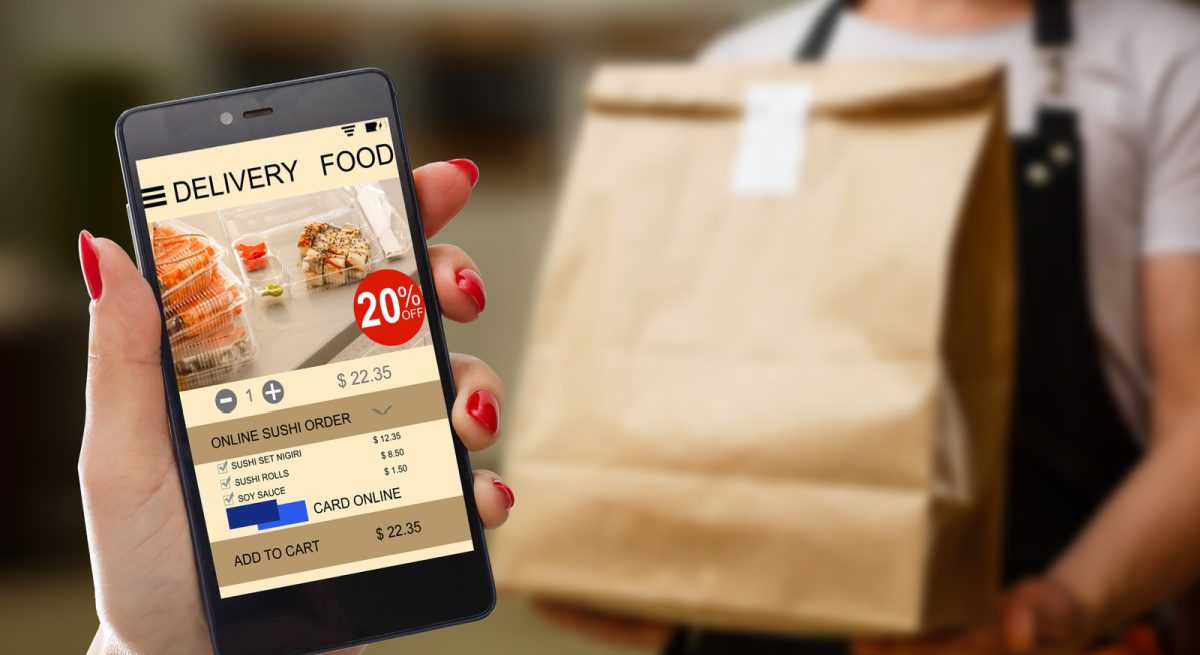Win Back the Customer Relationship: Why Mobile Apps Are the Golden Ticket
5 Min Read By Andrew Steele
There’s no denying consumer behavior has fundamentally shifted over the last couple of years, and it’s transformed the landscape of the restaurant industry along with it. Indeed, we’ve entered a new era of customer habits –– much of it catalyzed by the pandemic, but some of which was already beginning to take shape even prior.
Most notably is the shift to mobile and the way in which consumers patronize their favorite restaurants. Rather than dining in, more consumers are now opting for drive through, pick up curbside or carry out. Of course, delivery also spiked, but the underlying thread between each of these dining preferences is the use of mobile for ordering and pick-up.
In fact, according to a report by Bluedot, 86 percent of respondents surveyed said they have ordered directly from a restaurant app since the start of the pandemic. Similarly, the State of Mobile 2021 report by App Annie found mobile orders of food and food delivery in the US grew by 105 percent in the past year.
Indeed, it appears mobile is here to stay, if not become the preferred method for the way in which consumers engage with and order from their favorite restaurants. The challenge now will be how to earn and foster customer loyalty, particularly in a world where endless other options are just a screen tap away.
Owning the End-to-End Experience
Though third-party delivery apps have been growing in popularity for a number of years, usage surged when the pandemic hit and it hasn’t tapered off since. In fact, App Annie also reported that in April 2021, DoorDash ranked as the number one app in the food and drink category and received 2.1 million new downloads. UberEats came in just behind that.
This may come with little surprise, particularly as these third-party services also helped restaurants that didn’t have the logistical infrastructure to quickly pivot and at least continue some level of operation through delivery. Still, despite the convenience, several months after the forced closure, many restaurateurs began to realize just how much that convenience was chewing into already slim profit margins.
Many restaurateurs spoke out about the outlandish service fees and commissions, which often reached as high as 30 percent. With in-person dining revenues gone and high-margin liquor sales halted, these sky-high fees were all the more onerous. Several cities––including New York, San Francisco, Chicago and Seattle, just to name a few––have since passed legislation to permanently cap commissions food-delivery apps can charge restaurants, in some cases triggering lawsuits from the third-party delivery services.
But even with the commission caps in place, there’s another more fundamental threat these services pose to restaurants: the loss of control of the end-to-end customer experience. Though restaurants still prepare the meals, that’s as far as their role in the experience goes. The order, the delivery and ultimately the overall experience then falls into the hands of a driver or bike messenger who likely is not invested in creating a stellar experience on behalf of your brand.
Equally as critical, those same third-party delivery services capture and retain valuable information about a restaurant’s customers like a customer’s order history, demographic data and meal preferences. It shouldn’t come as a surprise that without access to that data, restaurants lose incredibly valuable insight into their own customers’ behavior that they could otherwise use to deliver the kind of personalized experiences that create and strengthen loyalty.
Even with the downsides though, it brings to the forefront a quandary that many quick-serves have faced for nearly a decade: Build in-house delivery or go the third-party route. Both have their pros and cons, but recent data shows, offering delivery may not be as important as once thought. It’s more about mobile ordering and the experience.
Refocusing on the Experience, Not the Delivery
Despite the rise in third-party food delivery app usage, several reports have recently surfaced revealing that consumers actually prefer to utilize mobile and online for curbside, drive through, and in-store pick-up. The aforementioned report by Bluedot also found 79 percent of respondents preferred to order directly from a restaurant’s app versus a third party.
For more proof, just look at recent campaigns by market leaders like Domino’s Pizza, Chick-fil-A, and McDonald’s. All are heavily promoting in-app ordering precisely because of the ability it gives them to control the experience for their customers, and to capture that gold mine of data they can use to better understand, engage and ultimately market to their customers.
While this may seem like something only the large ubiquitous brands can tackle, mobile apps and the ability to engage customers in a meaningful way are now more accessible than ever before. Reclaiming control of the customer relationship is about starting with whatever data you already have, regardless of how big or small your business and your database might be.
Building the Experience Around the Customer
Consumers are more willing than ever before to download a restaurant app. In fact, according to a 2021 report by Sensor Tower, a market intelligence firm focused on the global app economy, downloads of restaurant-branded apps grew by a combined 91 percent in 2020 across fast food, fast-casual and casual dining. By comparison, delivery app downloads only grew by three percent.
It’s clear customers want the option of an app and the convenience it provides. But with the increase in app usage, expectations have also risen.
Not only do customers want shorter wait times –– sub six minutes –– they also crave more personalized experiences, both in the app as well upon arrival. This means apps that automatically check them in and notify restaurant staff when they arrive, tailored digital menu screens when they pull up to the drive through, and personalized offers, to name a few.
Proximity engagement technology makes it possible for any restaurant to meet those customer expectations. Unlike legacy location-based or mobile marketing, proximity engagement analyzes opt-in location data from the app, along with data from other systems like your point-of-sale (POS) system, loyalty platform and customer relationship management (CRM) tools to understand the specific patterns and preferences of each individual customer.
That understanding then automates the delivery of a hyper-personalized message or offer at the precise moment and in the exact place that the customer will be most likely to respond. Not only does that delight the customer by giving them something they are likely to already want, that level of personalization tells that customer that you––the restaurant––understand what they like and value their relationship with you.
The possibilities of how to deploy proximity engagement are only limited by your imagination. Personalized lunch specials delivered via mobile notification when they’re in the area, a deal to add on their favorite dessert when they arrive for their mobile pick-up, or a message that prompts them with an offer to come in on a slow day of the week on which they wouldn’t normally visit.
Of course, none of this is possible unless you own the experience and the app. And while we may not know what the future holds and how consumer behavior will evolve, we do know they have endless options and are not afraid to take their dollars elsewhere. It’s become mission critical to meet them where they are –– and by doing so, you’ll also be more in tune to behavioral shifts down the road.


